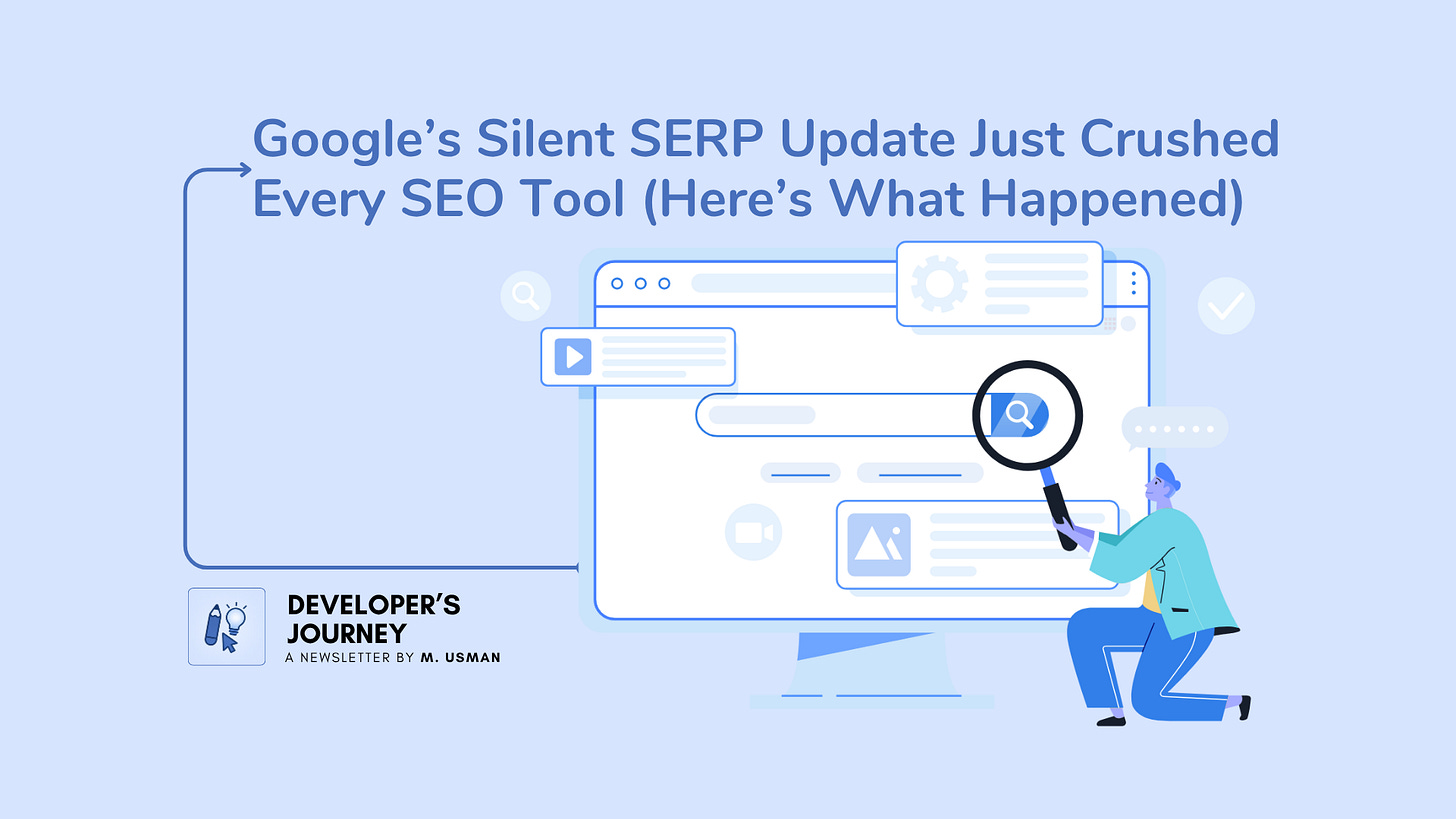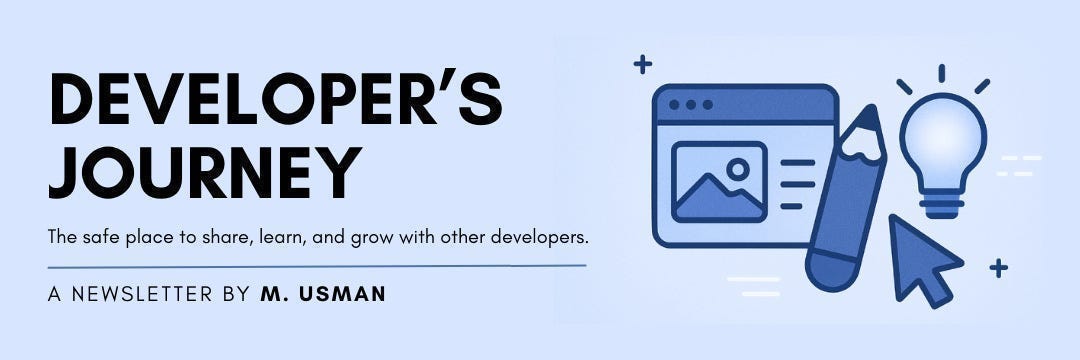Google’s Silent SERP Update Just Crushed Every SEO Tool (Here’s What Happened)
Google just killed the 100 results per page setting.
There’s a lot of panic in the SEO community right now. And honestly, it makes sense. Let’s start where this all began.
Ahrefs, one of the biggest SEO tools, posted on X saying:
“Google just capped SERPs at 10 results. That means no more 100-result pages. This change affects every SEO rank tracker, including Ahrefs. Here’s what you need to know”
And that post set the whole SEO community on fire.
What Exactly Changed?
For years, SEOs and tools relied on the&num=100parameter. Add it to the end of a Google search URL, and you’d instantly get 100 results on one page.
It wasn’t just a convenience trick. It powered rank trackers, scrapers, SEO audits, and keyword research at scale.
But now? In mid-September 2025, Google quietly shut it off, no more 100 result SERPs. You’re stuck with 10 results per page. If you want 100 results, you’ve got to crawl 10 separate pages, and that’s where things broke.
Follow and Subscribe:
| Substack | Medium | The Conversion Brief | Community: Dev Community | Bluesky | LinkedIn | Hackernoon |
Immediate Fallout Tools and Data Break
This single change creates panic through the SEO community:
Rank Trackers Got Crippled: Tools like Ahrefs, Semrush, and AccuRanker were built to grab 100 results in one fetch. Now they have to pull 10 pages to get the same dataset. For providers tracking billions of keywords, costs just exploded.
Google Search Console Data Got Weird: Impressions dropped hard for many sites. Average position looked better (because impressions from low-ranking positions vanished). Clicks stayed stable.
So if you opened GSC and saw impressions tank, but clicks didn’t move? That’s what’s going on.
Inflated Data Exposed: A lot of SEOs realized impressions had been padded by bots and scrapers all along. Removing
&num=100ripped off the band-aid and revealed numbers closer to actual human behavior.
Community Reactions
Chris Long said on LinkedIn:
“If you see a huge drop in impressions, don’t panic. A change to Google’s results is causing chaos in Search Console data and rank tracking.”
Barry Schwartz flagged the test early. Brodie Clark confirmed the data weirdness: impressions down, rankings up, clicks steady.
On Reddit frustrations:
This gives me actual anxiety. We rely on the 30–50 window to spot winners. Now it’s gone.
Google just made it 10x more expensive, one request is now 10. Multiply by millions of queries, and costs will explode.
I think this ties back to antitrust. Google has to share some data with competitors, but they’re making it harder first.
Expert Takes and Split Opinions
Joy Hawkins wasn’t thrilled:
“This could be terrible for the accuracy of Ahrefs. The top 10 only tells you so much. I often check deeper rankings to see how bigger sites are moving after updates. With only the top 10, the charts will swing way more.”
But Web Linker pushed back:
“There’s no implication for SEO in general, it stays the same.”
And honestly, that’s true too. The way we do SEO hasn’t changed. Keyword research, optimizing content, building authority, those fundamentals are untouched.
What changed is the data granularity. Tracking beyond page one is now messy and expensive.
Technical Implications of the Change
This update created two big technical headaches:
Search Console Is Messy: Impressions down, average position up, but neither metric is reliable anymore for deeper ranking insights.
Rank Tracking Costs Exploded: Instead of pulling 100 results in one call, tools must scrape 10 pages separately. SEMrush tracks 27.3 billion keywords, to get the top 100 for each keyword, they now need 273 billion fetches per month. That’s 10x more computing power, bandwidth, and cost.
Why Did Google Do This?
Google hasn’t called this an “update.” Their official line is simple:
The&num=100parameter was never officially supported.
So technically, this was a silent removal, not a formal rollout.
But the SEO community has theories:
Anti-scraping: Cutting off cheap bulk crawling makes it harder for AI companies and SEO tools to mine SERPs at scale.
User alignment: Almost no real users look past page one. Maybe Google wants impressions in GSC to reflect real user behavior.
Antitrust fallout: Google’s been under pressure to share data with competitors. By killing
&num=100, they make life harder for rivals while staying compliant on paper.
Hidden Angle
One of the biggest practical losses here? Spotting long-tail winners. SEOs loved using positions 20–50 to find hidden gems, keywords slowly climbing up that could be optimized into page-one traffic. Without easy access to those results, discovery is harder, slower, and more costly. That’s why so many are calling this a nightmare.
What SEOs Should Do Now
Re-baseline Reporting, treat mid-September 2025 as a reporting cutoff. Annotate dashboards. Don’t compare impressions pre- and post-change without context.
Focus on Clicks, CTR, and Conversions, impressions are less trustworthy. The real KPIs are still traffic, engagement, and leads.
Accept That Top 10 Is Everything: If you’re not in the top 10, you’re invisible. That was already mostly true, now it’s just official.
Communicate With Clients: Agencies: explain this clearly. Otherwise, clients will panic when they see “impressions down 50%.”
The Future of Rank Tracking
SEO tools are already scrambling:
Some are rebuilding infrastructure to handle 10x more requests.
Some will cap tracking at top 20 or top 10 to reduce the cost.
And some may shift their focus toward traffic analysis, conversions, and engagement instead of doing deep SERP monitoring.
Final Thoughts: Is SEO Dead? (Again)
Nope. SEO is still alive. Rank tracking just got messier.
Google could reverse this in a few weeks, or not, too soon to call, but the fundamentals haven’t changed:
Target the right keywords.
Put them at the start of your title, URL, meta description, H1, and first sentence.
Create content that answers intent and converts users.
Like Ahrefs said:
“This won’t be the last curveball. But our focus stays the same, giving clarity and confidence to make your business discoverable where it matters most.”
And that’s the point. Yes, this update is disruptive. But no, it doesn’t change how great SEO is done.
In short: Google capped SERPs at 10, tools broke, data shifted, everyone panicked. But SEO? Still here, still working, and still worth doing.
Did you learn something good today?
Then show some love. 🫰
©
WordPress Developer | Website Strategist | SEO Specialist
Don’t forget to subscribe to Developer’s Journey to show your support.




